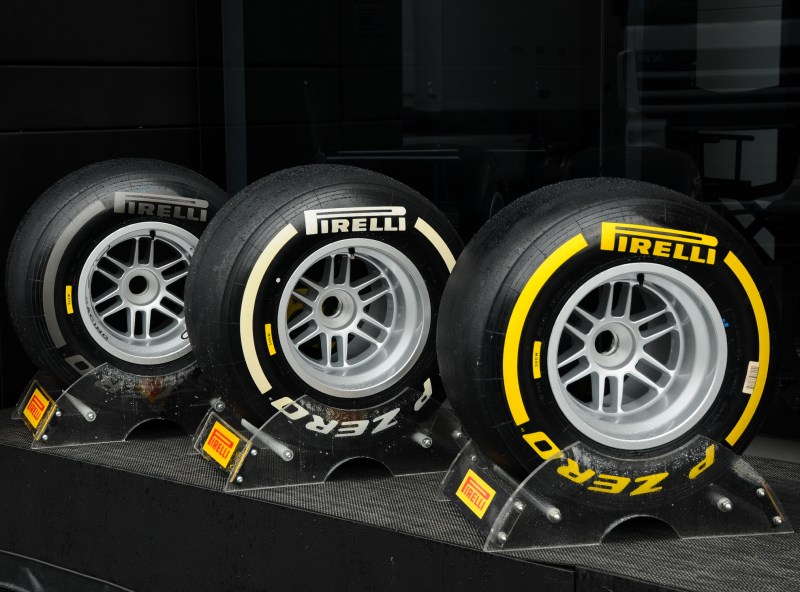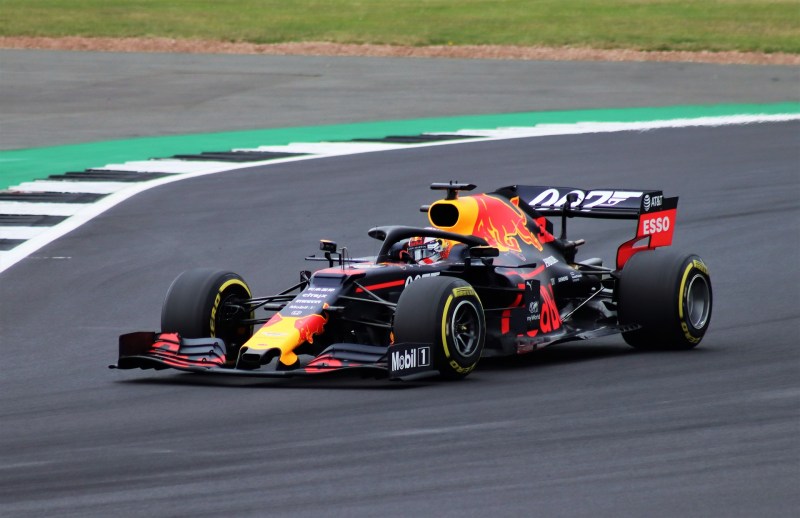
The difference between competing F1 race car times is often measured in fractions of a second. To keep the competition as fair as possible, the F1 governing organization, the Federation Internationale de l’Automobile (FIA), publishes comprehensive regulations each Formula 1 racing season.
There is no wiggle room in the FIA regulations for race car parts and structures. F1 drivers’ skills and tire management are the two most significant subjective factors in F1 racing. It’s absurd to try to micro-regulate humans, especially race car drivers. Therefore, the regulations for F1 racing tires matter greatly.
The FIA regulations for F1 tires aim to keep the sport competitive, fair, and safe. The FIA regulations for F1 tires include technical specifications for wheel rims and tires. F1 sporting regulations cover how teams manage the many sets of tires a single race car uses during a race.

F1 racing tire technical regulations
The FIA would probably like to measure everything involved with F1 racing, but that’s unrealistic. The F1 technical regulations include objective, measurable factors regarding F1 wheel rims and tires.
F1 car wheel rim material and dimensions
Wheel rims may have surface coatings, but the core structure of the rims must be made from one of two allowable magnesium alloys. The regulations also specify the rim’s tire mounting width and outer lip diameter. The rear wheels are larger than the front wheels.
Wheel rim supply
The FIA’s regulations specify that one supplier provides the wheel rims for all teams. BBS is the rim supplier for the 2023 F1 season.
F1 tire dimensions
F1 front tires must measure 345 mm to 375 mm wide. Rear tires must be between 440 mm and 470 mm wide. Dry weather tires, front and rear, cannot be greater than 725 mm in diameter. Wet weather tires can’t exceed 735 mm in diameter.
Tire supply
F1 racing teams all use the same Pirelli tires. Pirelli has been the F1 tire supplier since 2011, and based on a recently signed four-year contract, Pirelli will supply F1 tires through the 2027 season. Teams may not modify tires in any way.
F1 motorsport tire specification
The F1 racing season typically begins in March and ends in November. Before each F1 season, the appointed tire supplier and the FIA agree on the types of tires by September 1 and by December 1, they agree on the compounds that will be employed.
Tire inflation and modification
F1 teams can only inflate tires with air or nitrogen. Teams cannot alter tires to reduce moisture in the tires. Teams cannot fit multiple gas volume compartments inside a single tire.
Tire heating
Tire heating blankets that use up to three zones of resistance heating elements are the only allowed methods of heating tires other than driving them. Heated tires have an advantage over non-heated tires, so at any time during a race event, teams must be able to produce tire temperature data from the past 96 hours when requested by the FIA.
Wheel attachment and retention
Wheels must only be attached to an F1 race car by a single fastener with a diameter not greater than 105 mm and an axial length that does not exceed 75 mm. The only devices that can be used to attach or detach wheels from an F1 race car must powered by compressed air or nitrogen. Manual torque wrenches are also allowed for use to fit or remove wheels. Wheels must have a means of catching and retaining a loosened wheel fastener.

Formula 1 race tire sporting management regulations
The FIA’s F1 sporting regulations govern the tires F1 teams use during races and race-related events. The issues include the quantity, types, and compound variances of the tires supplied to teams for each race car.
Tire supply
The contracted tire supplier, Pirelli, provides each team with numerous sets in three specifications (soft, medium, and hard) of dry-weather tires for each car. The supplier also provides one set of wet-weather tires per race and one set of intermediate tires. Twice each season, the supplier may also provide an additional dry-weather tire to test tire performance.
Quantities of tires in sets of four
The number of sets of tires supplied to each team for a four-day race event weekend depends on the weather and if the race event is a tire testing event. The supplier will provide each team with 11 to 13 sets of dry-weather tires, four sets of intermediate tires, and three sets of wet-weather tires.
Tire compound specifications
Suppliers provide dry-weather tires with sidewall markings that identify by color rings the tire compound specification (soft, medium, or hard). Soft tires have better initial grip but wear out faster than hard tires. Hard tires take longer to warm up, but drivers can theoretically stay on the racetrack longer and need fewer pit stops.
Race event variance
If an F1 race event includes a sprint event (six such events are planned for the 2024 F1 schedule), the supplier will provide an extra set of dry weather tires for 13 sets. If the race event includes tire testing, the supplier will provide 11 sets of tires or one less than usual for non-sprint and non-testing events.
Tire testing
F1 teams agree to participate in tire testing.
Tire identification and control
All tires used during races must have unique identification that helps the tire supplier know when they were used to analyze how they performed.
Returning tires
As a team uses sets of tires during a four-day race event, the crew must return the tires following a proscribed schedule that helps the supplier manage the returned tires for later study and analysis.



